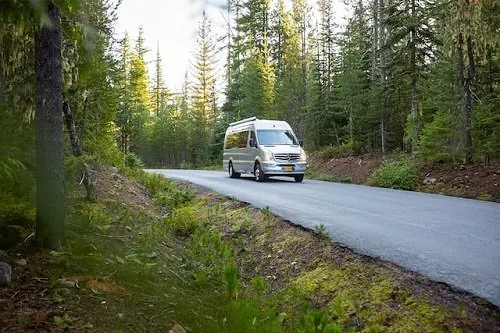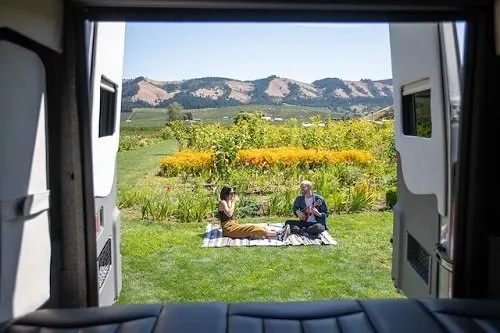Every human activity has a set of unwritten rules, which if you follow them, they will make your life easier and your enjoyment of the activity much better. When it comes to your recreational vehicle, you should know what the 3 3 3 rule is for RVing.
The short answer:
The 3 3 3 rule for RVing is a set of three pieces of advice to make traveling by RV more comfortable and enjoyable. The rules are that you should travel less than 300 miles per day, arrive at a destination before 3 PM, and stay there for at least 3 days.
But what does that mean and why should you follow them? And are there any other alternative rules for RVing? Let’s go into more detail…
The 3 3 3 rule for RVing Defined
As we’ve said above, it is advised to drive no more than 300 miles, arrive at some location where you will be staying no later than 3 PM, and stay there for at least three days or nights.
It is intended to create a certain planning timeframe you can easily use for planning your trips, especially the longer ones.
But also, to find the balance between being on the road and being on a vacation. So, let’s get to the details of what these three things mean and what they do.
Why Follow These RV Rules?
The first thing to know is that there is a method behind the 3/3/3 rule, it might look like arbitrarily selected three same numbers because someone wanted to have as many.
But, it is based on the experience of thousands of RVers. And it does serve a good purpose to make your life easier and RV trips easier to plan. When you have a framework set up, you can make plans within it. So, it is a convenient tool for planning trips.
300 miles
Driving can be very tiring no matter how comfortable the driving seat and position are. Especially if you are towing a 20-30 feet trailer.

Because both the trailers and motorhomes are much larger than cars and trucks, you need to concentrate on a bigger stretch of the road. And that will tire you quickly.
Up to 300 miles at some 60mph highway speed is 5 hours of driving. If you take 15-minute breaks every hour, that is 6 hours on the road. Doesn’t sound as much? Actually, it is quite a lot of time to keep your concentration on the road
3 PM
If you are traveling 300 miles, it will take you probably around 6 hours with breaks. So, to arrive somewhere by 3 PM, you need to get on the road by 9 AM. Which is not too early for any person. But why you would want to arrive before 3 PM?
Most RV parks have attendants working from 10 AM to 3 PM, so if you are arriving at campgrounds that you are not familiar with, it’s better to arrive while there is someone to show you the way around. Also, you will have plenty of daylight to set everything up for your stay.
3 days/nights
Exploring any location takes some time, and you must allow yourself to fully enjoy the place you are at. You should allow yourself at least three nights wherever you go.

This will give you at least two full days to enjoy your stay. Especially because you will start the stay relaxed after a full night’s sleep.
But also your next leg of the trip you will start in the same condition.
Alternatively, Take Breaks Every 3 Hours
For many people, the 3/3/3 rule has a slightly different meaning. Instead of the length of stay, it prescribes taking a break while driving every 3 hours. This will allow you to split your driving time into two legs, with a rest period between them.
It is not easy to drive long hours, and there is a reason why commercial truck drivers have mandatory breaks in the rest of the world.
In some parts, like Europe, you must have 45 minutes of brakes as one long or three shorter ones for every 4 and a half hours of driving.
Other RV Rules
The 3/3/3 rule is not the only one there is, there are a few more, and one of them might suit your needs better. They are:
- 2/2/2
- 4/4/4
- 3/300
- ASAP rule
2 2 2 RV Rule
The 2/2/2 rule is very similar to the 3/3/3, but it says no more than 200 miles driving, arrive before 2 PM, and stay at least 2 nights. It allows for a more leisurely pace of traveling, and if you don’t want/like to drive for too long, it could be better for you.

4 4 4 RV Rule
The 4/4/4 rule goes in the opposite direction compared to the 2/2/2 rule. If you are comfortable with driving longer times, like 400-mile-long trips, it could be your choice.
Especially if you also want to stay longer at one place, at least 4 days. But, at many camps, you will arrive after the attendants have left for the day, so it could be a drawback.
3/300 RV Rule
While the previous rules suggest the minimum number of days camping at some location, this rule is only about the driving time. And it is very simple, drive 300 miles or till 3 PM, whichever comes first.
ASAP RV Rule
This is not a rule as much as a preference of some people. Some like to arrive at their destination as soon as possible. So, they drive for as long as they feel capable or safe in doing so.
For some people, it is from sunrise to sunset. But some people unwisely forego all safety concerns and drive for 15 or more hours. We suggest you never do this.
Closing Thoughts
The experience of RVers over the decades has created unwritten rules of RVing that serve the purpose to make your planning of trips and execution of those plans easier and more enjoyable. One of them is the 3/3/3 rule. So, what is the 3 3 3 rule for RVing?
It is advised to drive no more than 300 miles per day, arrive at campgrounds before 3 PM, and stay at any place for at least 3 nights or 3 full days.
Up Next In RV:
What is the Best Class-B RV for the Money?
Do you need a CDL for a Class C RV?
Best Super C RV? (Top 10 Crowd Favorites)
Does a Class A RV Require a CDL? (Check Your State)
Erick is a freelance writer and outdoor enthusiast. Growing up in Nairobi Kenya and now calling Glasgow, United Kingdom home. Sipping on homemade spiced swahili tea and enjoying a good book is his idea of bliss.

